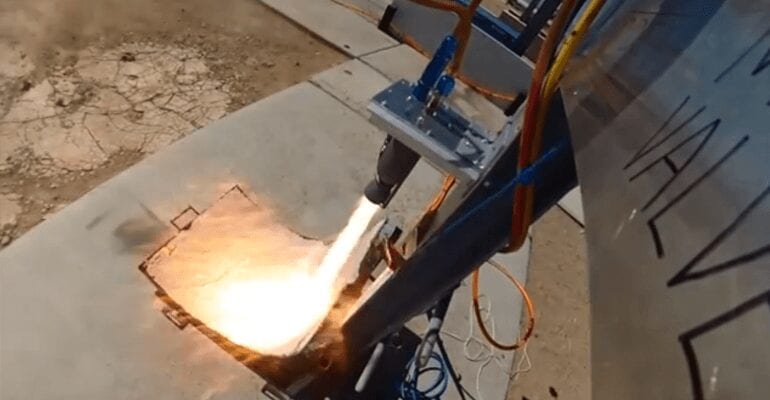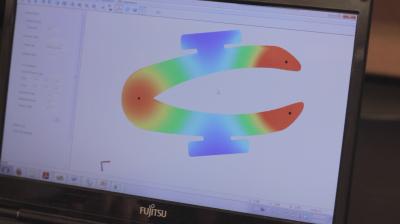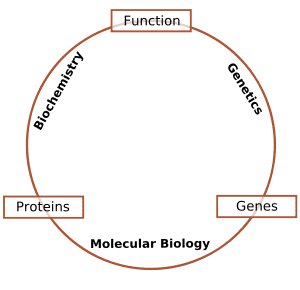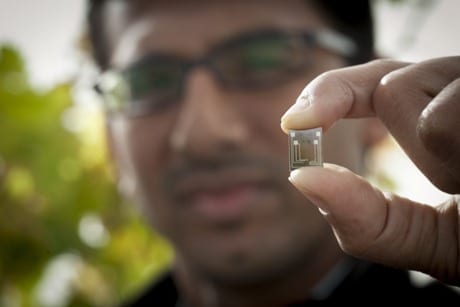
This is the first such test of a printed liquid-fueled, metal rocket engine by any university in the world
Like something out of a Robert Heinlein novel, students at the University of California, San Diego (UCSD) have built a metal rocket engine using a technique previously confined to NASA. Earlier this month, the UCSD chapter of the Students for the Exploration and Development of Space (SEDS) at the Jacobs School of Engineering conducted a hot fire test for a 3D-printed metal rocket engine at the Friends of Amateur Rocketry launch site in California’s Mojave Desert. This is the first such test of a printed liquid-fueled, metal rocket engine by any university in the world and the first designed and printed outside of NASA.
The Tri-D rocket engine, as it’s called, was designed and built with the cooperation of NASA’s Marshall Space Flight Center as part of an effort to explore the feasibility of printed rocket components. For purposes of the exercise, it was designed to power the third stage of a Nanosat launcher, that is, one capable of launching satellites that weigh less than 1.33 kg (2.93 lb).
Tri-D is only about 7 in (17.7 cm) long and weighs about 10 lb (4.5 kg). Made of a chromium-cobalt alloy, it burns kerosene and liquid oxygen and produces about 200 lb (90.7 kg) of thrust. The students’ main contribution was design of the injector plate, which is a key component used to inject fuel into the combustion chamber. In this case, the injector has a Fuel-Oxidizer-Oxidizer-Fuel inlet arrangement with two outer fuel orifices converging with two inner oxidizer orifices.
The rocket has a regenerative cooling jacket that extends to the nozzle to keep the engine cool while firing. It was designed to burn the fuel in the middle of the combustion chamber to keep as much heat as possible away from the chamber walls, while insulating them with a boundary layer of relatively cool gases.
The Tri-D engine cost only US$6,800 with NASA putting up US$5,000 and the students collected the balance with fundraisers, such as barbecue sales.
Go deeper with Bing News on:
3D-printed metal rocket engine
- Rocket Lab Completes Archimedes Engine Build, Begins Engine Test Campaign
The Archimedes test campaign will take place at Rocket Lab's dedicated engine test stand at America's largest rocket propulsion test site, NASA's Stennis Space Center in Mississippi. As an oxidizer ...
- AFRL Uses Additive Manufacturing to Make Single-Block Rocket-Engine Thrust Chamber
The AFRL has announced that it has turned to laser powder DED additive manufacturing to create a rocket-engine thrust chamber.
- This 3D-Printed Microturbine Engine Is Designed To Do More Than Fly
A metal 3D printer makes an object one hair-thin horizontal ... but the application of it is a bit lagging, apart from rocket engines, medical implants, and concept projects, such as the Czinger ...
- 3D-printed rocket succeeds in launch debut—but doesn’t make it into orbit
Most of the 110-foot (33-meter) rocket, including its engines, came out of the company’s huge 3D printers in Long Beach, California. Relativity Space said 3D-printed metal parts made up 85% of ...
- Launch debut of 3D-printed rocket ends in failure, no orbit
Most of the 110-foot (33-meter) rocket, including its engines, came out of the company’s huge 3D printers in Long Beach, California. Relativity Space said 3D-printed metal parts made up 85% of ...
Go deeper with Google Headlines on:
3D-printed metal rocket engine
[google_news title=”” keyword=”3D-printed metal rocket engine” num_posts=”5″ blurb_length=”0″ show_thumb=”left”]
Go deeper with Bing News on:
Microplastics in water
- Microrobotic Swarms Tackle Microplastics and Bacteria Pollution
In recent research published in the journal ACS Nano, researchers reported how swarms of microscale robots, or microrobots, collected microorganisms and plastic fragments from water.
- Is Your Teabag Exposing You to Microplastics? Yes, According to New Research
I remember the first cup of hot tea I ever had. I was 17 and recovering from a misdiagnosis that left me unable to walk or feed myself. My mom had to go to work and so left me with my grandmother to ...
- Swarms of Miniature Robots Clean Up Microplastics and Microbes, Simultaneously
Microscale robots that mimic natural swarms, like schools of fish, have been designed to capture microplastics and bacteria from water.
- Tiny tenacious robots snatch bacteria and microplastics out of the water
Scientists have developed tiny "robots" which appear to be very effective at removing microplastics pollution from water. What's more, the little bots also target the harmful bacteria that often hitch ...
- America has a $250 billion problem: Microplastics have invaded our bloodstreams and may increase the risk of heart attack and stroke
Plastic-based products and their detritus are everywhere on Earth. Microplastics are in the food we eat, even raw fruits and vegetables, and have been found in both tap and bottled water. California ...
Go deeper with Google Headlines on:
Microplastics in water
[google_news title=”” keyword=”microplastics in water” num_posts=”5″ blurb_length=”0″ show_thumb=”left”]










